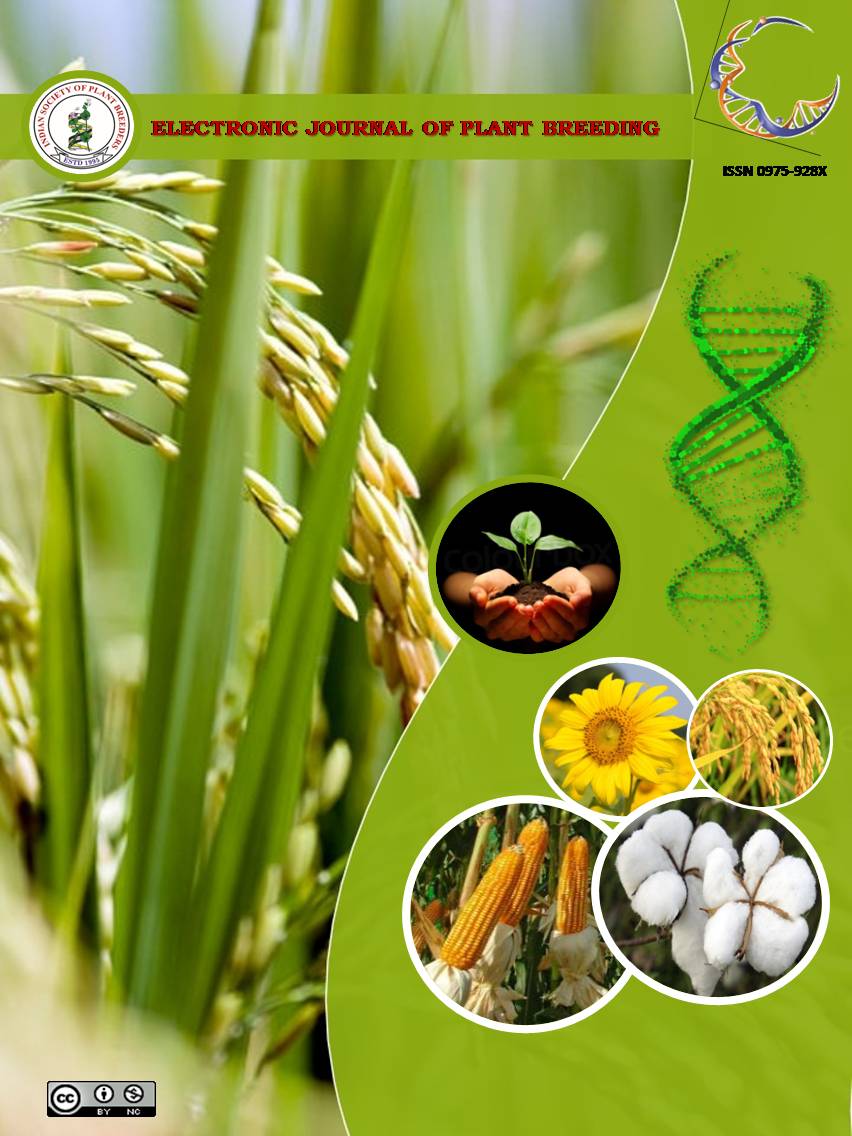Genetic diversity analysis in Solanuum surattense – An endangered medicinal plant
Abstract
Forty nine accessions of Solanum surattense were collected from different parts of India and used for study at the Department of Medicinal and Aromatic Crops, Tamil Nadu Agricultural University, Coimbatore during 2020-21. The field trial was laid out in Randomized Block Design (RBD) and replicated thrice. Diversity analysis was done by Mahalanobis D2 method utilizing 34 traits of Solanum surattense. The accessions were grouped into six clusters indicating the presence of a huge amount of diversity among the accessions. The maximum intra cluster distance was registered in cluster VI (137.94) followed by cluster I (123.88). The lowest intra cluster distance was recorded in cluster II (20.62). Clusters I and VI had the highest inter cluster distance (128.25) followed by clusters V and VI (115.36). Cluster IV recorded the maximum mean value for nine traits. Maximum contribution towards divergence was observed for root dry weight (33.25%) followed by dry berry weight per plant (10.29%). From this study, a great insight to select promising traits / promising accessions for further breeding programmes can be visualized. The selection of diverged parents would be useful to get more variability in segregating generations.

